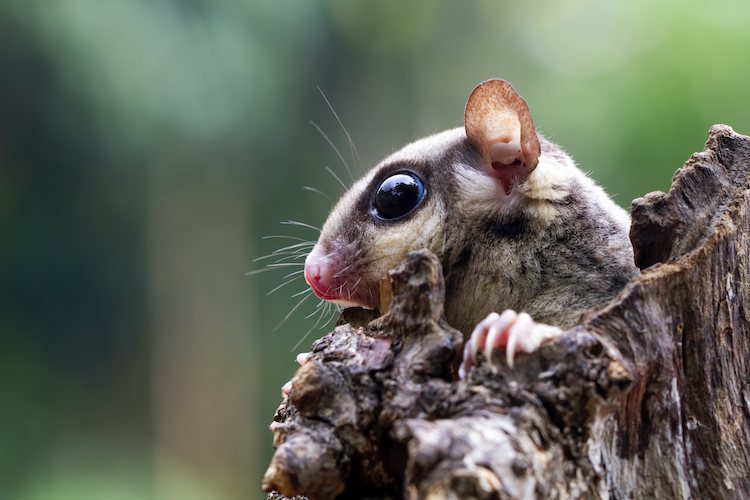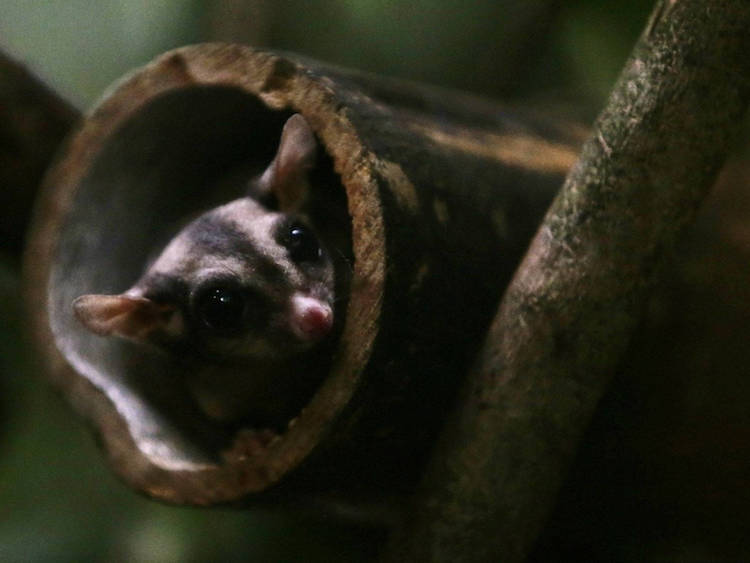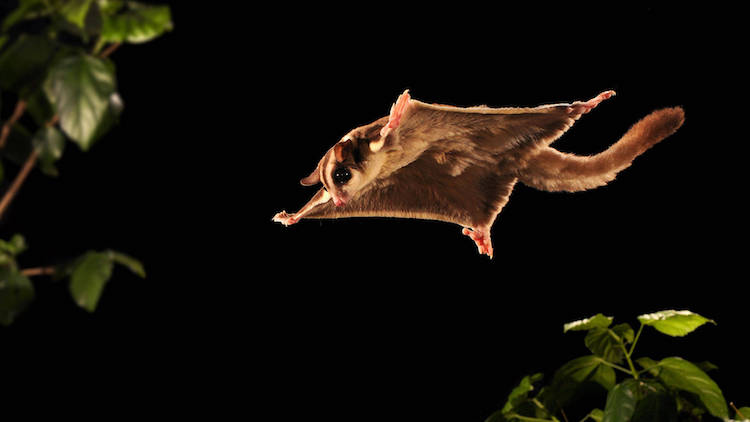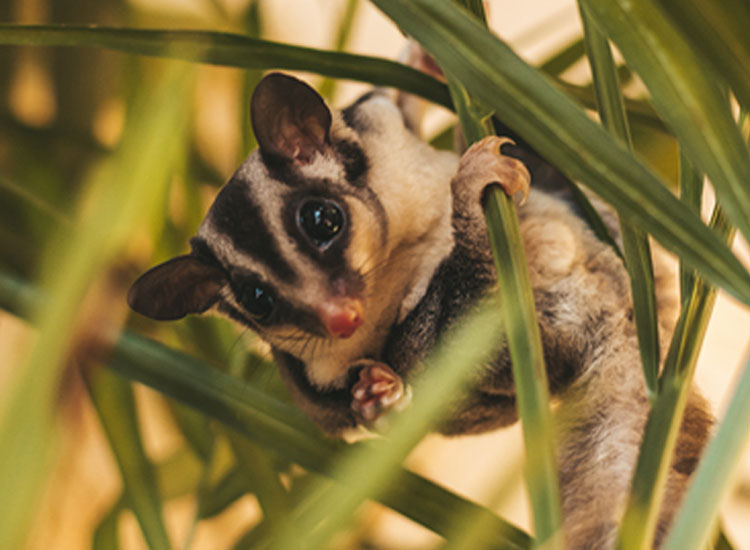Common Sugar Glider Diseases

Sugar gliders, known for their cute and small appearance, are popular exotic and pocket pets worldwide, although their domestic ownership is prohibited in some states and countries. Unfortunately, these adorable marsupials are susceptible to several illnesses.
To ensure the long-term health and happiness of your pet sugar glider, it’s essential to be proactive in researching exotic pets and establishing a relationship with an experienced veterinary team. Annual check-ups are necessary, as small pets like sugar gliders tend to mask their illnesses until they become severe. Early detection of any disease can make a significant difference in saving your pet sugar glider’s life.
Sugar Glider Metabolic Bone Disease
Although metabolic bone disease is commonly associated with pet reptiles, it is also a prevalent issue in sugar gliders. Sugar gliders, like reptiles, require calcium and vitamin D3 in their diets to maintain healthy bones. When they don’t receive adequate amounts of these vitamins and minerals, their bones become soft, leading to further complications such as heart disease, seizures, pneumonia, and bone fractures.
Fortunately, an exotics vet can diagnose this disease through bone density testing and nutritional consultations. Treatment typically involves calcium and vitamin D3 supplementation, along with diet corrections. Secondary complications may require additional medication. To prevent bone fractures, pet sugar gliders with metabolic bone disease should be kept in cages and allowed to rest until their bone density has improved.
Sugar Glider Ick
Ich, ick, or white spot disease is a well-known parasite problem in aquariums, but sugar glider ick is caused by a different protozoan called Simplicomonas. Although the parasite is typically found in the intestinal tract of sugar gliders, it can cause diarrhea and poor coat quality when combined with stress.
If you suspect your pet sugar glider has ick, seek immediate treatment from an exotics veterinarian. Malnourishment and dehydration can occur quickly in these tiny animals, so any signs of diarrhea or changes in coat quality should not be ignored. The diagnosis of sugar glider ick is confirmed through fecal sample testing, which identifies the microscopic parasites.
Preventing the disease is challenging because it is unclear how sugar gliders acquire the protozoan, and it can spread quickly between sugar gliders. To prevent transmission of the disease to another pet sugar glider, wash your hands before and after handling an animal.
Sugar Glider Skin Infections
Skin infections are common in sugar gliders and can be caused by various bacteria, including the most common culprit, Mycobacterium. These infections can arise from a variety of sources, such as dirty enclosures, fecal matter buildup, and contaminated substrate or bedding. Fungal spores, which are often found in corn cob bedding, can also contribute to infections. In some cases, skin infections may be a secondary result of self-mutilation.
Keeping your pet sugar glider’s enclosure clean and regularly changing their food and water is essential for preventing skin infections. If you notice any signs of infection, such as a foul odour or unkempt coat, take your pet sugar glider to an exotics vet immediately. They may prescribe antibiotics or antifungals to treat the infection.
Sugar Glider Self-Mutilation

Just like humans, pet sugar gliders can suffer from mental health issues. One such issue is self-mutilation, which can result from extreme stress in pet sugar gliders. This behavior can cause physical damage, such as open wounds and infections, as well as cosmetic damage. Initially, it may start with over-grooming or excessive licking, but it can escalate to hair-pulling and skin-chewing if left unchecked. If these wounds are left untreated, they can lead to sepsis and even death.
Preventing self-mutilation in pet sugar gliders requires creating a suitable home environment with minimal stress. In the wild, sugar gliders live in large colonies where they communicate, bond, forage, and engage in other activities. To reduce the likelihood of behavioral problems, stress, and disease development, pet sugar gliders should always be housed with at least one other pet sugar glider, preferably in a group.
Sugar Glider Bone Fractures

Sugar gliders are known for their love of jumping and gliding, but these behaviors can put them at risk of bone fractures. Curtain rods and other high perches may be tempting for your pet sugar glider to land on, but they can also be dangerous. Unfortunately, bone fractures are a common problem in pet sugar gliders.
To prevent bone fractures, it’s important to create a safe environment for your pet sugar glider to explore and play. Soft landing areas, such as pillows, blankets, or tumbling mats, can provide a cushioned landing spot. When sugar glider-proofing your home, make sure to remove any items that your pet sugar glider can get their legs stuck in, and be mindful of what they can climb on and jump off from.
Conclusion
Owning a pet sugar glider requires careful attention and responsibility to ensure their overall health and well-being. Regular check-ups with a knowledgeable veterinarian, proper nutrition, and a safe environment are essential for their overall health.
Download the JoJo Pets app today for exclusive news and offers at https://jojo-pets.com/
